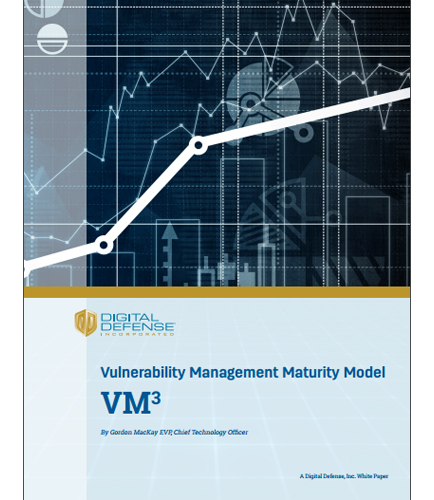
PROCESSING. PLEASE WAIT...


White Paper: Digital Defense
An organization’s vulnerability management maturity level is related to their ability to drive out security risk from their operations. The purpose of this model is to help organizations gauge their level of maturity with respect to their vulnerability management processes and their security maturity risk level.
What truly is vulnerability management?
Vulnerability management is a process which includes far more than a vulnerability scanning and management technology. There is a strong need for organizations to learn and evolve their vulnerability Management programs to control security risk attacks and data breaches.
Learn from this whitepaper the factors which are indicative of an organization’s vulnerability management maturity level such as,
Business environment: Indirect factor which influences the maturity of vulnerability management
Policies: service level agreements
Assessment related factors that play important role into an organization’s maturity level of VM
Remediating/mitigating vulnerability findings
Last step of vulnerability lifecycle process: Measuring and reporting findings.
By: Bristlecone
Since digitalization is the key to enhancing customer experience, organizations go through the digitalization journey to create an ecosystem and provide a significant number of products and services which focus on the customer experience. This whitepaper defines digitization as the process by which various analog elements into electronically readable formats in order to create a paperless environment in an organization. Key takeaways from this whitepaper: Need for Digital business transformation Structure of a Digital Transformation Framework Digitizing the business operations and the organization Enterprise Digitalization Roadmap in this digital era Digitalization creates a unique experience for all customer interactions in a controlled and predictable vendor environment.
By: I-Sprint Innovations
In the digital era, financial institutions need to meet and exceed the expectations of a new generation tech savvy users with digital broadband access to on-demand cloud-based services via a wide range of mobile devices. In order to earn customers’ trust and confidence in their digital channels, financial institutions will have to secure identity and manage cross-channel access while leveraging mobility and the cloud. This whitepaper provides insights on how financial institutions can secure identity and data in a hyper-connected world where the data center perimeter has blurred and the enterprise attack surface has radically expanded with increased cloud adoption and mobility. Case studies illustrating how financial institutions are implementing prudent steps to engage customers across multiple channels Ultimate aim of the omni-channel initiatives Emerging methods of authentication How to boost security and compliance while ensuring differentiated customer experience in omni-channel service delivery


 2025 All Rights Reserved | by: www.ciowhitepapersreview.com
2025 All Rights Reserved | by: www.ciowhitepapersreview.com